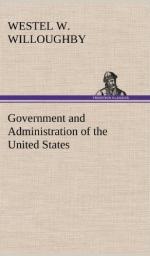In the New England towns the people govern themselves directly. In the State and Federal governments the people are governed not by themselves, but through representatives chosen by themselves. The town or township form of government is that of a pure democracy; the States and Federal governments are representative governments or republics.
The supreme governing power of a town is in the town meeting, composed of all qualified voters of the town. The town meeting is held in the Spring of each year. After the choice of a Moderator, officers are elected for the ensuing year, reports of officers for the past year read, and the amount of taxes to be raised and expenditures to be made during the year, determined upon. The officers are the Selectmen, three, five, seven or nine in number, who constitute the executive officers of the town, and administer the ordinances passed by the town meeting; a town clerk, who keeps a record of the proceedings of the town meeting, and a record of births, deaths, marriages, etc.; a treasurer, assessors and collectors of taxes, constables, and various other petty officers. Several offices are frequently given to the same individual.
The county also exists in New England, and is formed by the union of several towns, but it is of very little importance, and has but few duties. The township system is found in the Middle States, but in a modified form. It is less democratic as a rule—officers being elected by ballot, the town meeting generally absent, and county government more important.
_#2d. Local Government in the South.#_—Here the town (township) does not exist, except in a few instances. The unit of government for performing local duties is the county, which is much larger than the New England townships. The county government is managed by a Board of County Commissioners. These are elected not in open meeting as are the town officers, but by ballot. County government is therefore a representative or republican government. The county, wherever found, is primarily a judicial district. The chief officer for executing the decrees of the county judiciary is the sheriff. Other county officers are the treasurer, assessor, etc.
_#Local Government in the West.#_—Here, as before stated, we find the New England and the Southern systems combined, but combined in different States in such various degrees as to make impracticable any attempt to describe them more particularly.[1] In consequence of the grants of land by the Federal Government to Western States for education, local areas for the administration of these funds have been formed. These are called school districts. Local government has tended to center around these districts, and they have in many cases become important administrative districts. Their boundaries coincide with the boundaries of the townships and counties, though a number of school districts may be in one county or township.




